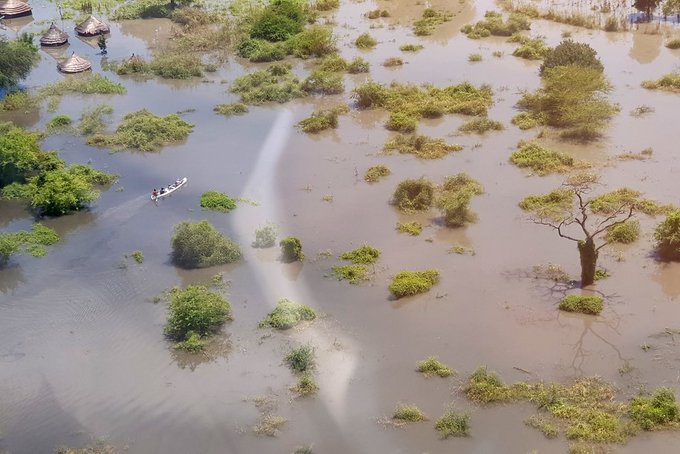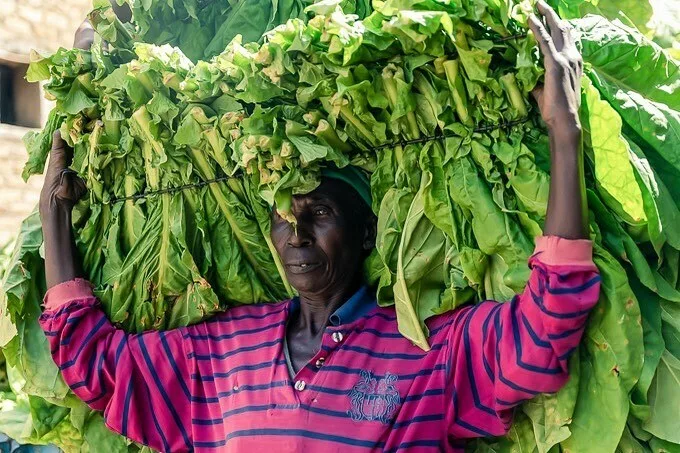|
Getting your Trinity Audio player ready...
|
Extreme weather is slamming crops across the globe, bringing with it the threat of further food inflation at a time costs are already hovering near the highest in a decade and hunger is on the rise.
Brazil’s worst frost in two decades brought a deadly blow to young coffee trees in the world’s biggest grower. Flooding in China’s key pork region inundated farms and raised the threat of animal disease. Scorching heat and drought crushed crops on both sides of the U.S.-Canada border. And in Europe, torrential rains sparked the risk of fungal diseases for grains and stalled tractors in soaked fields.
Coffee’s the biggest recent mover, with prices surging 17% this week week and topping $2 a pound for the first time since 2014. But the recent frost in Brazil is just the latest example of woes that have struck farmers there this year. Brazil’s also experiencing a crippling drought that depleted reservoirs needed for irrigation.
The series of misfortunes underscores what scientists have been warning about for years: Climate change and its associated weather volatility will make it increasingly harder to produce enough food for the world, with the poorest nations typically feeling the hardest blow. In some cases, social and political unrest follows.
Hungry and Angry — Scoring Food Price Risks
“Things that are happening in one part of the world end up impacting all of us,” said Agnes Kalibata, a United Nations special envoy for the 2021 Food Systems Summit and Rwanda’s former agriculture minister. “We’ve underestimated as a world is just how frequently” weather would start to have serious impacts.
“Some communities are already living through the nightmares of climate change,” Kalibata said.
The Food Price Index from the UN’s Food and Agriculture Organization rose for 12 consecutive months through May before easing in June to 124.6 points, still up 34% from a year earlier. The index measures the international prices of a basket of food commodities.
Food Costs Finally Drop After Surge to Decade High
No other industry is more at the mercy of sun, rain, and heat than agriculture, where changes in the weather can upend a farmer’s fortunes overnight. It’s also an industry that’s become extremely globalized and concentrated, creating a precarious situation where an extreme weather event in one place is bound to have ripples everywhere.
Brazil, for example, is the world’s biggest shipper of sugar and orange juice and a key producer of corn and soybeans. It accounts for about 40% of the world’s harvest for arabica coffee, the smooth variety that shows up in your Starbucks cup.
“There’s no other country in the world that has that kind of influence on the world market conditions — what happens in Brazil affects everyone,” said Michael Sheridan, director of sourcing and shared value at Intelligentsia Coffee, a Chicago-based roaster and retailer.
What’s unique right now is that extreme weather seems to be pounding almost every region of the globe.
Scorching North America
Dry conditions in Canada coupled with record-breaking heat triggered hundreds of wildfires, with blazes spanning east across five provinces and nearly as far north as the Arctic Ocean in the Yukon and Northwest Territories. Fires have been so treacherous in westernmost British Columbia that thousands of rail cars carrying grain for export have been idled for weeks.
The drought is also withering crops in Canada’s breadbasket Prairie provinces and in the northern U.S., forcing farmers to take the rare step of baling up their low-yielding wheat and barley stems to sell as livestock feed. Prices for the region’s spring wheat, the variety used to make flour for bagels and pizza crusts, recently touched the highest in more than eight years. Even fresh shellfish in the Pacific Northwest has fallen victim to the extreme heat and its impact on marine life.
Frosty Brazil
The severe frost that ravaged major arabica-coffee areas in Brazil is especially deadly for young trees, which could create greater losses for farmers and hurt production for years.
The death of young trees increases the likelihood that the crops even two years from now will be compromised, said Judy Ganes, a consultant who’s covered commodities markets for more than three decades. Farmers will have to trim off damage, destroying yields, or replant their fields.
Flooded China
Flooding in the central Chinese province of Henan, a hub for agricultural and food production, appears contained for now but is being closely watched for any sign of more serious disruption. While some hog farms and corn crops were battered by recent heavy rains, most production is located away from the hardest-hit regions.
A bigger worry is the potential spread of animal diseases including African swine fever, which China has been recovering from after a devastating outbreak in 2018 that wiped out almost half of its hog herd. The nation’s agriculture ministry on Friday warned about the growing risks of animal epidemics after the Henan disaster, saying diseases could spread from dead animals as well as via contaminated soil and water. Local authorities were urged to retrieve carcasses from lakes and rivers, disinfect breeding pens more frequently, and strictly prohibit the sale and processing of dead animals.
Soggy Europe
Dramatic images of inundated towns in Germany and Belgium this month are adding to a wetter-than-usual summer across much of Europe. Rain has taken its toll on grains, leading to harvest delays. That follows a spring of frosts that damaged crops from sugar beets to fruit trees and devastated some vineyards in France and elsewhere.
While European wheat output is actually expected to increase this year, a share of the harvest may end up switching from milling for bread products to feeding farm animals instead. That threatens shipments to North Africa, which relies on imports of high-quality grain.
Source: Bloomberg






